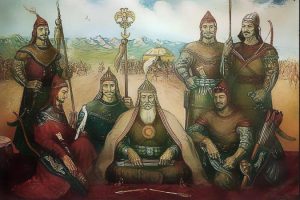The reunification of Germany in 1990 marked a significant turning point in European history. After decades of division caused by the Cold War, the unification of East and West Germany brought about profound social, political, and economic transformations. This article explores the remarkable journey of the reunification process, highlighting its historical context, key events, and lasting impact.
Following World War II, Germany was divided into four occupation zones controlled by the Allied powers: the United States, the Soviet Union, France, and the United Kingdom. Tensions between the Soviet Union and the Western Allies eventually led to the construction of the Berlin Wall in 1961, physically separating East and West Germany. The division intensified the ideological and economic differences between the two regions, leading to contrasting political systems and living conditions.
- Fall of the Berlin Wall: The defining moment of the reunification process occurred on November 9, 1989, when the Berlin Wall was opened. Peaceful protests, combined with the desire for freedom and reunification, culminated in the dismantling of the symbolic barrier that had divided families and communities for almost three decades.
- The negotiations that followed the fall of the Berlin Wall resulted in the Two-Plus-Four Agreement, signed by the two German states (East and West Germany) and the four occupying powers (the United States, the Soviet Union, France, and the United Kingdom). This agreement paved the way for German reunification and provided a framework for addressing key issues such as borders, military presence, and international recognition.
- The reunification process posed significant economic challenges. The integration of East Germany’s socialist economy with West Germany’s market-oriented system required extensive financial support and structural adjustments. The transformation process, known as “die Wende,” involved privatization, infrastructure development, and the creation of new institutions to facilitate economic convergence.
- Political Unity: The reunification of Germany resulted in the establishment of a single, democratic government. East Germany underwent a transition from a socialist system to a parliamentary democracy, aligning its political institutions with those of West Germany. The reunified Germany became a prominent player in European and global affairs, contributing to the stability and integration of the European Union.
- The economic disparities between East and West Germany presented significant challenges. The reunification process aimed to reduce these disparities through massive investments in infrastructure, education, and job creation in the eastern states. While progress has been made, socioeconomic gaps still persist, requiring ongoing efforts to ensure equal opportunities and regional development.
- German reunification had a profound impact on European integration. The enlarged Germany played a vital role in shaping European policies, promoting economic cooperation, and supporting the European Union’s expansion. It also facilitated the integration of Eastern European countries into the EU, fostering political stability and economic growth in the region.
The reunification of Germany stands as a testament to the resilience and determination of the German people and serves as a powerful symbol of overcoming division. While challenges remain, the remarkable journey of reunification has brought about political unity, socioeconomic transformation, and European integration. Germany’s reunification continues to inspire hope for peaceful resolutions to conflicts and the pursuit of a more united and prosperous world



















Add Comment